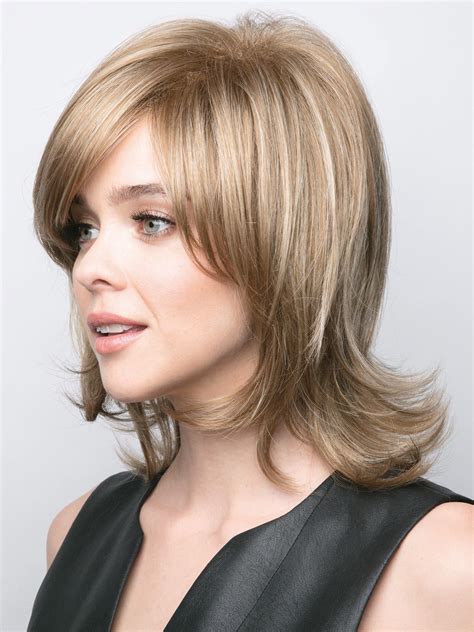- Part 1: Understanding Hair Replacement
- Causes of Hair Loss and Hair Replacement Options
- Non-Surgical Hair Replacement vs. Surgical Hair Replacement
- Part 2: Choosing the Right Hair Replacement Method
- Types of Non-Surgical Hair Replacement
- Types of Surgical Hair Replacement
- Part 3: The Benefits of Hair Replacement
- Improved Confidence and Self-Esteem
- Increased Social Participation
- Reduced Stress and Anxiety
- Part 4: The Costs of Hair Replacement
- Non-Surgical Hair Replacement Costs
- Surgical Hair Replacement Costs
- Part 5: Maintenance and Care of Hair Replacement
- Maintenance for Non-Surgical Hair Replacement
- Maintenance for Surgical Hair Replacement
Part 1: Understanding Hair Replacement
Causes of Hair Loss and Hair Replacement Options

Hair loss is a common problem that affects millions of women worldwide. While there are numerous causes of hair loss, including genetics, hormonal changes, and medical conditions, hair replacement can offer a solution for those seeking to restore their hair.
Non-Surgical Hair Replacement vs. Surgical Hair Replacement
Hair replacement methods can be either non-surgical or surgical. Non-surgical hair replacement involves attaching a hairpiece or wig to the scalp, while surgical hair replacement involves implanting artificial hair follicles into the scalp. Both methods have their own advantages and disadvantages, which will be discussed later in this guide.
Part 2: Choosing the Right Hair Replacement Method
Types of Non-Surgical Hair Replacement
Non-surgical hair replacement options include:
- Wigs: Wigs are complete hairpieces that cover the entire head. They come in a variety of materials, styles, and colors.
- Hairpieces: Hairpieces are smaller than wigs and cover only a portion of the head. They can be used to add volume, length, or color to existing hair.
- Hair extensions: Hair extensions are attached to existing hair to add length, volume, or thickness. They can be made from human hair or synthetic materials.
Types of Surgical Hair Replacement
Surgical hair replacement options include:
- Follicular Unit Transplantation (FUT): FUT involves removing a strip of skin from the donor area at the back of the scalp and transplanting the individual hair follicles into the recipient area.
- Follicular Unit Extraction (FUE): FUE involves extracting individual hair follicles directly from the donor area and transplanting them into the recipient area.
Part 3: The Benefits of Hair Replacement
Improved Confidence and Self-Esteem
Hair is often associated with beauty and femininity, so hair loss can have a significant impact on a woman’s confidence and self-esteem. Hair replacement can restore a woman’s sense of self and increase her overall well-being.
Increased Social Participation
Hair loss can make women feel self-conscious and withdrawn from social situations. Hair replacement can give women the confidence to participate in social activities without fear of being judged or ridiculed.
Reduced Stress and Anxiety
Hair loss can be a source of significant stress and anxiety. Hair replacement can alleviate these negative emotions by providing a sense of relief and empowerment.
Part 4: The Costs of Hair Replacement
Non-Surgical Hair Replacement Costs
Non-surgical hair replacement costs vary depending on the type of hairpiece or extension chosen, as well as the materials and craftsmanship involved. Costs can range from hundreds to thousands of dollars.
Surgical Hair Replacement Costs
Surgical hair replacement costs can be more substantial than non-surgical options, typically ranging from several thousand to tens of thousands of dollars. The cost will depend on the surgeon’s expertise, the number of hair follicles transplanted, and the surgical technique used.
Part 5: Maintenance and Care of Hair Replacement
Maintenance for Non-Surgical Hair Replacement
Non-surgical hair replacements require regular maintenance and care to keep them looking their best and extend their lifespan. This may involve washing, styling, and potentially reattaching the hairpieces as needed.
Maintenance for Surgical Hair Replacement
Surgical hair replacements typically require less maintenance than non-surgical options, but they still need to be cared for properly to maintain their appearance. This may involve regular visits to the surgeon for checkups and potential touch-ups.
Hair replacement can be a transformative solution for women experiencing hair loss. It can restore confidence, increase social participation, reduce stress, and ultimately enhance overall well-being. By understanding the various hair replacement methods available, their benefits, costs, and maintenance requirements, women can make informed decisions that will empower them to feel and look their best.
Tables
Table 1: Causes of Hair Loss
| Cause | Percentage |
|---|---|
| Genetics (e.g., female pattern baldness) | 50-60% |
| Hormonal changes (e.g., pregnancy, menopause) | 20-30% |
| Medical conditions (e.g., thyroid disease, alopecia areata) | 10-20% |
| Medications | 5-10% |
| Lifestyle factors (e.g., stress, poor diet) | 5-10% |
Table 2: Types of Non-Surgical Hair Replacement
| Type | Description |
|---|---|
| Wigs | Complete hairpieces that cover the entire head |
| Hairpieces | Smaller than wigs, cover only a portion of the head |
| Hair extensions | Attached to existing hair to add length, volume, or thickness |
Table 3: Types of Surgical Hair Replacement
| Type | Description |
|---|---|
| Follicular Unit Transplantation (FUT) | Involves removing a strip of skin from the donor area and transplanting the hair follicles into the recipient area |
| Follicular Unit Extraction (FUE) | Involves extracting individual hair follicles from the donor area and transplanting them into the recipient area |
Table 4: Benefits of Hair Replacement
| Benefit | Description |
|---|---|
| Improved confidence and self-esteem | Restores a woman’s sense of self and increases her overall well-being |
| Increased social participation | Gives women the confidence to participate in social activities without fear of being judged or ridiculed |
| Reduced stress and anxiety | Alleviates negative emotions by providing a sense of relief and empowerment |
